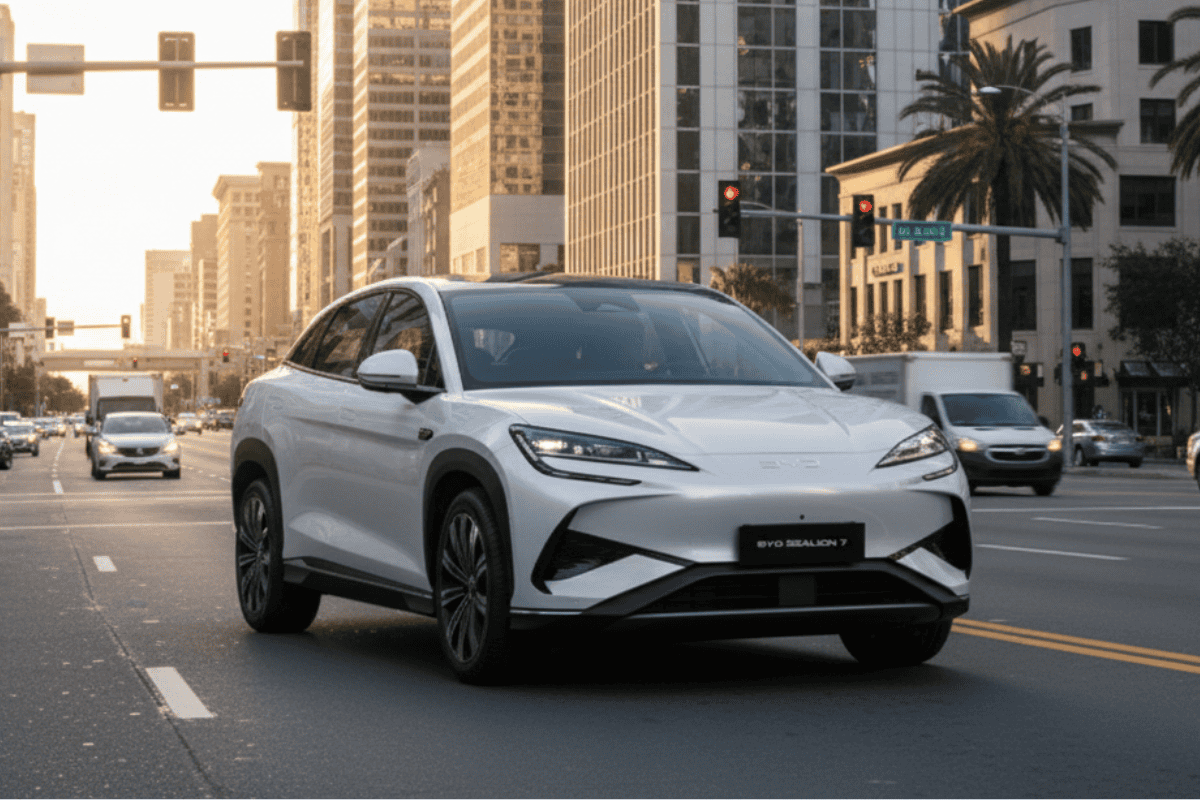In Australia, September 2025 marked the highest number of EV sales to date in the continent’s history. Australians are hopping onto low-emission vehicles. The clip, however, is still slow, but relative to before, there is increased activity. It is estimated that around 12,076 brand new EVs were sold in Australia, which is approximately 11.3% of the total new car sales. It seems an astonishing feat that more than 1 in 10 automobiles sold were EVs.
Most recently, data from both the Federal Chamber of Automotive Industries, FCAI, and the Electric Vehicle Council, EVC, have said that sales were starting to spike, which indicates a positive growth in the consumer market space.
EVs and Most Popular Brands Driving Growth
Much of the growth in September can be attributed to Tesla’s revitalisation. Their Model Y sold almost 4,000 units, nearly double the amount sold the previous year, while the Tesla Model 3 contributed an additional 736 cars to the net sales. On the other hand, Chinese manufacturers are making progress with BYD at the forefront. The BYD Sealion 7 maintained its status as one of the country’s bestselling EVs, with 1,887 sales in September.

“Brands are stepping up to the mark,” noted Tony Weber, FCAI’s CEO, “There are now more than 100 electric cars and over 50 plug-in hybrids available in Australia. However, rapid investment in public charging is now the next most important component. The average Australian must be able to have confidence in the worldwide shift to EV ownership. This is the only way that we can get to the adoption rates that the government is dreaming of, beyond the early adopters.”
Momentum Starts to Shift Toward Conventional and Plug-in Hybrid Powertrains
Hybrids are now capturing better than 13.8% of new vehicle sales, while PHEVs are usually noted as being in the 4–4.4% range, depending on the source. In Australia, the dominant vehicle segment is SUVs, which now account for 60% of new sales, while the market for passenger cars has dwindled to only 12% of new sales. And despite these trends, it is utility vehicles, such as the Toyota HiLux and Ford Ranger, that still lead sales, indicating that Australian vehicle buyers still have a strong appetite for rugged, versatile vehicles.
The Growing Influence of China in Australia’s EV sector
Chinese manufacturers have a growing presence in the Australian market. Overall, sales of vehicles sourced from China increased remarkably by 67.7% year on year. Notable brands include BYD, GWM Haval, and Chery. BYD in particular, however, is emerging as a dominant player within the EV space, exhibiting an astounding 149.8% increase in year-to-date sales.
The Sales Boom
The government has been discussing the sources of funding and the necessary infrastructure investments for an EV public charging network. They also pledged $40 million for “EV” public charging network infrastructure, which might encourage people to buy “EVs”, which will enhance the climate objectives of Australia. These objectives include 5 million “EVs” on the road, which is 20 times the current number.
Delvecchio also stated that the sales of the “EV” will contribute to Australia’s climate goals, describing it as the “highway” to achieving Australia’s 2035 climate targets. She also stated that there will be more savings and less fuel usage, which is an advantage of having more “EVs” on the road. Based on current projections and estimates for the future, it is expected that the charge will support Australia’s climate objectives.
Remaining Challenges for Hybrid
The EVs are proving to be increasingly popular; however, some still face numerous economic and regulatory challenges. There are also issues related to the infrastructure policy framework that will still be addressed, which will make it easier to meet the goals. With more plans being put into infrastructure and charging times, an increasing number of customers will be attracted.
Honda plans for hybrids to account for 50% of sales this year and 75% the following year. It has been predicted that increased sales will help more “EV” hybrids meet the goals being put into place.
Looing Ahead
With EVs now accounting for more than 11% of new car sales and infrastructure development underway, Australia is placing more focus on the automotive industry’s future. The prevailing trend indicates that larger sections of the Australian populace are prepared for electric transport, having outgrown the early-adopter stage and expediting the shift towards low-emission transport.
👉 Please 📩SUBSCRIBE to us for more real-world EV analysis, news, and deep dives — written for EV fans by EV fans. It’s FREE!
Hey, I’m Badal! I’m super passionate about cars—especially electric ones. Whether it’s EVs, electric trucks, bikes, or anything with a battery and wheels, I’m all in. I love writing blogs and articles that break things down for fellow enthusiasts and curious readers alike. Hope you enjoy the ride as much as I do! Enjoyed reading? You can buy me a coffee on PayPal ☕ → paypal.me/BadalBanjare
